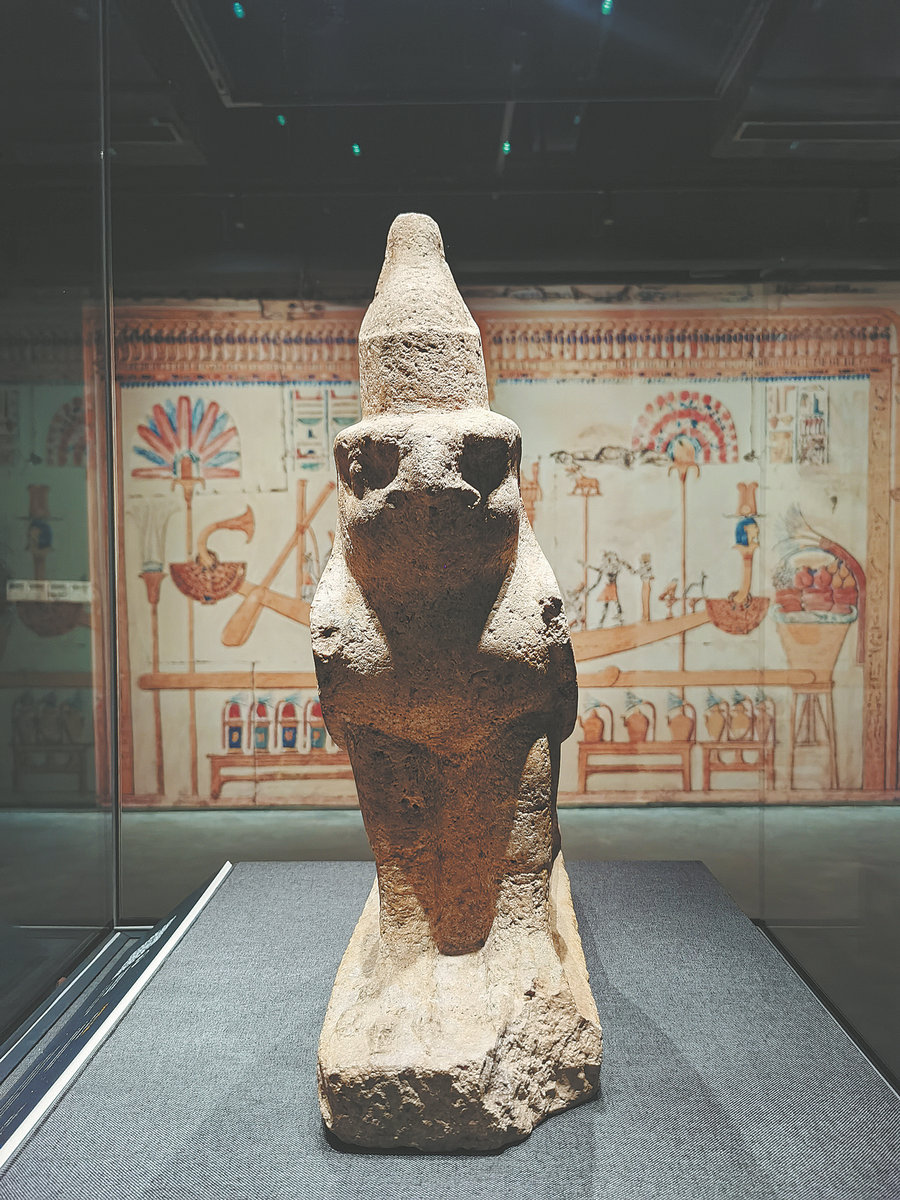Wonders that transcend the sands of time
 0 Comment(s)
0 Comment(s) Print
Print E-mail China Daily, September 26, 2022
E-mail China Daily, September 26, 2022

As in earthly life, the servants of the powerful departed were to continue to fulfill their function in the afterlife. Whether on the walls of the tomb or in the form of a funerary model, as in this case of two men slaughtering an ox, they provided the necessities for the deceased.
With a collection accrued over 200 years, the Egyptian Museum of Barcelona showcases the achievements of ancient Egyptian civilization, one of the greatest civilizations in the Mediterranean world, just as the Sanxingdui Museum in Guanghan, Sichuan, displays the wonders of Chinese civilization, according to the Consulate General of Spain in Chengdu.
The Sanxingdui Museum is 40 kilometers north of Chengdu and houses relics excavated from the Sanxingdui Ruins which were found in 1929, when Yan Daocheng, a local villager, unearthed a pit full of jade and stone artifacts while repairing a sewage ditch at the side of his house.
The site houses the ruins of an ancient city that was the political, economic and cultural center of the Shu Kingdom. In ancient times, Sichuan was known as Shu.
The site is viewed as one of the most important archaeological discoveries made in China during the 20th century.
Duan Yu, a historian with the Sichuan Provincial Academy of Social Sciences, says the Sanxingdui site, located on the upper reaches of the Yangtze River, is convincing proof that the origins of Chinese civilization are diverse, as it scotches theories that the Yellow River was its sole origin.
812fbc26-7a76-40a7-9a96-7510dbda13fe.jpeg)




Go to Forum >>0 Comment(s)